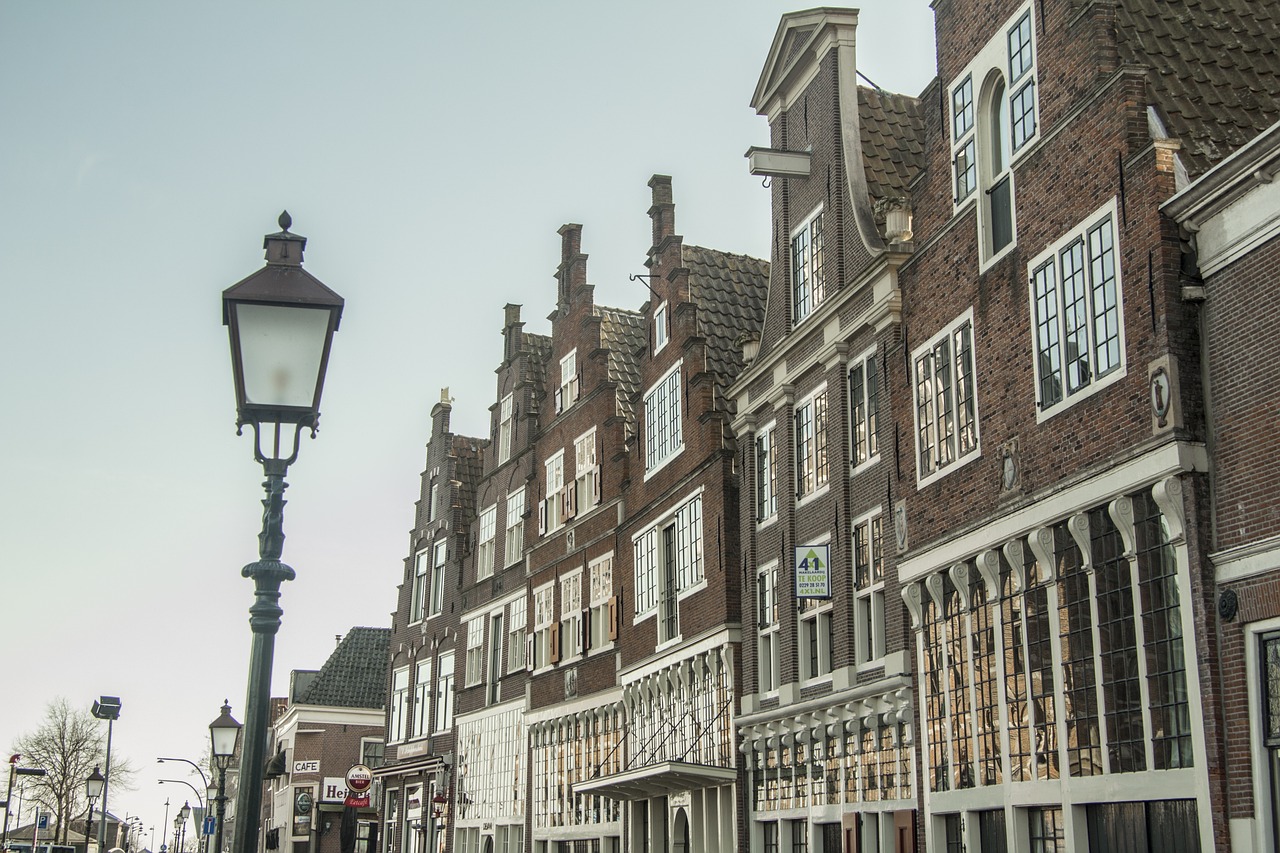Dutch Elm Disease (DED) can be effectively managed through a combination of prevention strategies, timely treatment, and proper tree care. Key methods include planting resistant tree varieties, maintaining tree health, and applying fungicides as needed.
Dutch Elm Disease is a devastating fungal infection that affects elm trees across many regions. The disease is primarily caused by the fungus Ophiostoma ulmi, which is spread by elm bark beetles. These beetles carry the spores of the fungus from infected trees to healthy ones. Once a tree is infected, the fungus blocks its water-conducting vessels, leading to wilting and eventual death.
The impact of Dutch Elm Disease has been significant, resulting in the loss of millions of elm trees in urban and rural landscapes. This has not only affected the aesthetics of communities but has also resulted in ecological imbalances. It is crucial for property owners, urban planners, and arborists to understand effective treatment and management strategies to combat this disease.
Understanding Dutch Elm Disease

To effectively manage Dutch Elm Disease, it is essential to understand its life cycle and how it spreads. The disease primarily affects mature elms, particularly American elms. Here are some key points about the disease:
- Symptoms: Yellowing leaves, wilting, and dark streaks in the wood are common signs of infection.
- Spread: The fungus spreads through infected beetles and root grafts between trees.
- Infection Rate: Without intervention, the infection can spread rapidly, often killing trees within a few years.
Understanding these dynamics helps in creating effective management plans. Prevention is critical in combating Dutch Elm Disease. Planting resistant tree varieties can significantly reduce the risk of infection. Additionally, healthy trees are less susceptible to diseases and pests. Proper maintenance practices can help keep trees vigorous and resilient.
Prevention Strategies
The most effective approach to managing Dutch Elm Disease is through prevention. Here are several strategies that can be implemented:
- Choose Resistant Varieties: Planting elm varieties that are resistant to DED can significantly reduce the risk of infection. Some examples include ‘Valley Forge’ and ‘New Horizon.’
- Regular Monitoring: Conduct routine inspections of elm trees for early signs of disease or beetle activity.
- Sanitation Measures: Remove and properly dispose of infected trees and branches to prevent further spread.
- Cultural Practices: Maintain proper watering, mulching, and fertilization practices to promote tree health.
In conjunction with prevention strategies, timely treatment methods are also essential for managing infected trees. Different treatments may be employed depending on the severity of the infection and the overall health of the tree.
Treatment Options
If an elm tree is diagnosed with Dutch Elm Disease, immediate action is necessary to potentially save the tree and mitigate further spread. Here are some treatment options:
| Treatment Method | Description |
|---|---|
| Fungicide Application | Injecting fungicides into healthy trees can help prevent infection and control the spread in symptomatic trees. |
| Pruning | Removing infected branches can help slow down the progression of the disease. |
| Tree Removal | In severe cases, removing infected trees may be necessary to protect nearby healthy trees. |
Employing these treatment options along with robust preventive measures creates a comprehensive strategy against Dutch Elm Disease. Communities and individuals can work together to protect their elm trees and preserve this cherished species for future generations.
Identifying Symptoms of Dutch Elm Disease
Recognizing the symptoms of Dutch Elm Disease early is crucial for effective management. The sooner a tree is diagnosed, the better the chances of successful treatment or intervention. Symptoms can vary, but they typically occur in the following stages:
- Initial Symptoms: The first signs often include yellowing leaves and wilting, primarily in the upper branches.
- Wilting and Leaf Drop: Infected trees may exhibit wilting leaves that eventually turn brown and drop prematurely.
- Crown Dieback: As the disease progresses, the crown of the tree may begin to die back, with significant loss of foliage.
- Dark Streaks: Cutting into the bark may reveal dark streaks in the wood, indicating the presence of the fungus.
It is important for property owners and arborists to routinely inspect elm trees for these symptoms. Early detection can lead to more effective interventions, reducing the risk of spreading the disease to other trees.
The Role of Elm Bark Beetles
Elm bark beetles are a critical factor in the spread of Dutch Elm Disease. Understanding their life cycle and behavior can help in developing strategies to control their population and, consequently, the spread of the disease.
Life Cycle of Elm Bark Beetles
The primary beetle responsible for transmitting Dutch Elm Disease is the Scolytus scolytus, or smaller European elm bark beetle. Here’s a brief overview of its life cycle:
- Egg Laying: Adult beetles lay eggs in the bark of infected trees.
- Lava Development: The larvae feed on the inner bark, creating tunnels and further damaging the tree.
- Pupal Stage: Larvae pupate in the tunnels they have created before emerging as adults.
- Adult Emergence: New adult beetles emerge in spring, seeking healthy trees to infest.
Understanding this life cycle helps in timing control measures effectively. For instance, applying insecticides during the adult emergence period can help limit beetle populations and reduce disease spread.
Effective Management Practices
Combating Dutch Elm Disease requires a multi-faceted approach. Here are some effective management practices that can be implemented by communities and individuals:
- Regular Tree Inspections: Monitoring elm trees for early signs of infection is essential. Regular inspections can help identify problems before they escalate.
- Insect Control: Using insecticides to manage elm bark beetle populations is vital. Timing applications to coincide with adult emergence can maximize effectiveness.
- Proper Pruning Techniques: Pruning should be performed during dry seasons to minimize infection risk. Use sterilized tools to prevent introducing pathogens from one tree to another.
- Soil Health Management: Healthy soil promotes tree vigor. Implementing good soil practices can help strengthen trees against diseases and pests.
Collaboration among community members, local governments, and arborists can further enhance efforts in managing Dutch Elm Disease. Engaging local organizations and raising awareness about the disease can lead to collective action, benefiting all elm trees in the area.
Research and Future Directions
Ongoing research plays a pivotal role in understanding Dutch Elm Disease and developing new management strategies. Scientists are exploring various avenues, including:

- Disease-Resistant Varieties: Breeding programs are focused on developing elm varieties that are resistant to the disease.
- Biological Control Agents: Research into natural predators or parasites of elm bark beetles could provide new methods of pest control.
- Advanced Monitoring Techniques: Innovations in technology for monitoring tree health and disease spread are being investigated, including remote sensing and data analytics.
The future of managing Dutch Elm Disease relies heavily on collaborative efforts between researchers, tree care professionals, and the public. By staying informed about advancements in treatment and prevention strategies, communities can better protect their elm trees from this destructive disease.
Community Involvement in Elm Tree Preservation

Community involvement is essential for the successful management of Dutch Elm Disease. Collective efforts can lead to more effective prevention, treatment, and education initiatives. Here are several ways communities can engage in preserving elm trees:
Awareness Campaigns
Raising awareness about Dutch Elm Disease is a crucial first step. Communities can organize campaigns to inform residents about the disease and its impact on local environments. Here are some strategies:
- Workshops and Seminars: Hosting educational sessions for homeowners, landscapers, and local businesses to learn about the signs of DED and appropriate management techniques.
- Social Media Outreach: Utilizing social media platforms to share information, updates, and tips on elm tree care and disease prevention.
- School Programs: Introducing educational programs in schools to teach children about tree health and the importance of biodiversity.
Volunteer Initiatives
Volunteer programs can mobilize community members to take action in preserving elm trees. Here are some ideas for effective volunteer initiatives:
- Tree Planting Events: Organizing community tree planting days with disease-resistant elm varieties can help replenish the local elm population.
- Invasive Species Removal: Volunteers can help remove invasive species that may compete with elm trees for resources.
- Monitoring Programs: Establishing volunteer groups to monitor local elm trees for signs of disease can enhance early detection efforts.
The Role of Local Governments
Local governments play a vital role in managing Dutch Elm Disease through policy development, resource allocation, and community support. Here are some actions local authorities can take:
- Legislation and Policies: Implementing regulations that promote the planting of disease-resistant varieties and the removal of infected trees can help control the spread of DED.
- Funding and Grants: Providing financial support for tree care initiatives, including grants for residents who wish to maintain or replace their elm trees.
- Public Works Programs: Incorporating tree health assessments into municipal planning and maintenance schedules.
Best Practices for Homeowners
Homeowners can take individual action to protect their elm trees and contribute to broader preservation efforts. Here are some best practices:
- Proper Tree Care: Regularly water, mulch, and fertilize trees according to their needs to maintain overall health.
- Sanitation Measures: Clean up fallen branches and leaves, especially during peak beetle activity seasons, to minimize breeding grounds.
- Consulting Professionals: Hire certified arborists for tree assessments and treatment options, ensuring that any interventions are performed correctly.
Utilizing Technology in Tree Management

The use of technology in managing Dutch Elm Disease is becoming increasingly valuable. Innovations can enhance monitoring, treatment, and data collection efforts. Here are some technological advancements currently being explored:
- Drones for Monitoring: Drones equipped with cameras can survey large areas quickly to identify trees showing signs of disease or stress.
- Sensors for Soil Health: Soil sensors can provide real-time data on moisture levels, nutrient content, and pH levels to optimize tree care practices.
- Mobile Apps: Applications that allow users to report symptoms or sightings of pests can help create a broader database for monitoring DED trends.
By combining community efforts, local government initiatives, and technological advancements, it is possible to create a robust framework for managing Dutch Elm Disease effectively. Engaging all stakeholders in this effort will not only protect existing elm trees but also ensure the sustainability of urban and rural landscapes.
Challenges in Managing Dutch Elm Disease
Despite the knowledge and tools available for managing Dutch Elm Disease, several challenges remain. Understanding these obstacles is essential for developing effective strategies to combat the disease.
- Rapid Spread: The disease can spread quickly through beetle populations and root grafts, making containment difficult.
- Limited Resources: Many communities may lack the financial or human resources necessary for comprehensive tree management programs.
- Public Awareness: A general lack of awareness among the public about the symptoms of DED can lead to delayed detection and treatment.
- Environmental Factors: Climate change and urban development can create stress on trees, making them more vulnerable to diseases and pests.
Addressing these challenges requires a collaborative approach that involves educating the public, securing funding, and integrating new technologies into management practices. By actively engaging all stakeholders, communities can develop adaptive strategies that consider local environmental conditions and resources.
Innovations in Research and Development
Ongoing research is crucial in the fight against Dutch Elm Disease. Scientists are continuously exploring innovative solutions that could lead to breakthroughs in disease management. Some promising areas of research include:
- Genetic Engineering: Research into genetically modifying elm trees for increased resistance to the disease may offer long-term solutions.
- Fungal Pathogen Studies: Understanding the genetics and life cycle of the fungus causing DED can lead to better-targeted treatments and preventative measures.
- Integrated Pest Management (IPM): Developing IPM programs that combine biological, cultural, and chemical controls can create a holistic approach to managing both the disease and its vectors.
These innovations highlight the importance of scientific collaboration across disciplines. By fostering partnerships between researchers, arborists, and community organizations, more effective management practices can be developed to combat Dutch Elm Disease.
Final Thoughts
Managing Dutch Elm Disease requires a comprehensive and coordinated effort that encompasses prevention, treatment, and community engagement. The disease poses significant threats to elm trees, which are valued for their beauty and ecological importance. It is crucial for communities to adopt proactive measures, including regular monitoring, public education, and collaboration with local governments and experts.
The integration of technology into tree management practices offers exciting possibilities for improving detection and treatment strategies. By harnessing advancements in research and technology, communities can enhance their ability to combat Dutch Elm Disease effectively.
Ultimately, preserving elm trees is not just about protecting a species; it is also about maintaining the health and diversity of urban ecosystems. As communities come together to address this challenge, they can foster a deeper appreciation for their natural environments and promote sustainable practices that benefit future generations.
Through continued efforts in education, research, and community involvement, there is hope for successfully managing Dutch Elm Disease and ensuring that elm trees continue to thrive in our landscapes.
